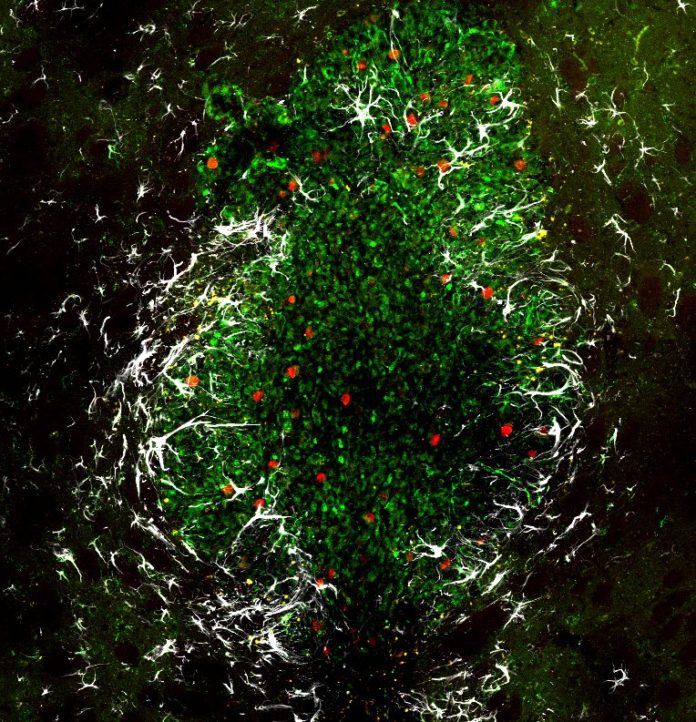Glioblastomas (also called GBM) are malignant Grade IV tumors, where a large portion of tumor cells are reproducing and dividing at any given time. They are nourished by an ample and abnormal tumor vessel blood supply. The tumor is predominantly made up of abnormal astrocytic cells, but also contain a mix of different cell types (including blood vessels) and areas of dead cells (necrosis).
GBM cells works by reprograming their fatty acid metabolism to energize themselves for their rapid growth. But how they do this remains unclear.
If they are deprived of this way of generating energy, the growth of cancer cells slows down. This thought led scientists at the German Cancer Research Center (DKFZ) to investigate the production of a cell protein called acyl-CoA-binding protein (ACBP) in mice. They found that ACBP apparently controls the availability of fatty acids in the mitochondria, the “power plants of the cell”.
During the experiment on mice, scientists genetically switched off ACBP from the tumour. Doing so increased the lifespan of mice as the tumour had less energy at its disposal and thus less able to grow.
Julieta Alfonso from the DKFZ in Heidelberg, the senior author of the study said, “Our study reveals a critical link between fatty acid metabolism and the aggressive growth of glioblastoma. In the future, ACBP could possibly represent a new therapeutic target for the treatment of this poorly treatable type of cancer.”
Still, there are still questions that remained unclear yet. So far, there is no drug available that inhibits the activity of ACBP. Therefore, the scientists are currently unable to make any statements about the side effects of ACBP inhibition in the entire body.
The study is published in the journal cell metabolism.
